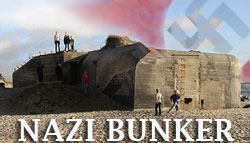 NAZI BUNKERS
NAZI BUNKERS
Just In! See the 5 photographs
Three Nazi bunkers on a beach have been uncovered by violent storms off the Danish coast, providing a store of material for history buffs and military archaeologists. The bunkers were found in practically the same condition as they were on the day the last Nazi soldiers left them, down to the tobacco in one trooper’s pipe and a half-finished bottle of schnapps.
This bunker was entombed under the sand dunes until a violent storm swept away the sands three months ago.
The bunkers had not been touched since the war.
The bunkers were three of 7,000 built by the Germans as part of Hitler’s ‘Atlantic Wall’ from Norway to the south of France . But while the vast majority were almost immediately looted or destroyed, these three were entombed under the sand dunes of a remote beach near the town of Houvig since 1945. They were uncovered only because recent storms sent giant waves cascading over them, sweeping away the sand and exposing glimpses of the cement and iron structures.
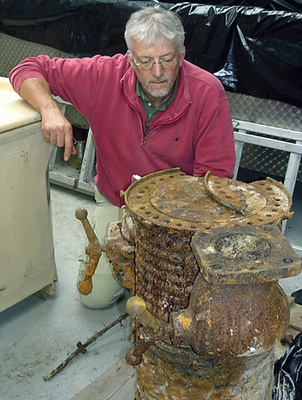 Kim Clausen, curator of the Ringkoebing-Skjern museum views a heater retrieved from the bunker.
Kim Clausen, curator of the Ringkoebing-Skjern museum views a heater retrieved from the bunker.
Stamps of the German Eagle of Adolf Hitler and the Swastika were also retrieved.
They were located by two nine-year-old boys on holiday with their parents, who then informed the authorities. Archaeologists were able to carefully force a way, and were astounded at what they found. What’s so fantastic is that we found them completely furnished with beds, ‘chairs, tables, communication systems and the personal effects of the soldiers who lived inside,’ says Jens Andersen, the curator of the Hanstholm museum.
The discovery of the fully-furnished bunkers was ‘unique in Europe ,’ said Bent Anthonisen, a Danish expert on European bunkers. Expert Tommy Cassoe: ‘It was as if the Nazis had just left yesterday’.
And a third expert, Tommy Cassoe, enthused: ‘It was like entering the heart of a pyramid with mummies all around. What I saw blew me away: it was as if the German soldiers had left only yesterday.’ The team working with Cassoe emptied the structures within a few days of boots, undergarments, socks, military stripes, mustard and aquavit bottles, books, inkpots, stamps featuring Hitler, medicines, soda bottles, keys, hammers and other objects. All of the objects from the shelters have been taken to the conservation centre at Oelgod museum, some 20 miles from the beach to be examined.
The centre’s German curator, Gert Nebrich, judged the find ‘very interesting because it is so rare.’ ”We don’t expect contemporary
objects like these to be so well preserved. Maybe it’s because they were kept for 60 years in the cold and dark like in a big vacuum,’ he
says, carefully showing four stamps featuring Hitler’s image and the German eagle, found in one bunker. The Germans left the bunkers in
May 1945 after the Nazi surrender.
Historical records show that Gerhard Saalfed was a 17-year-old soldier with the German army when he arrived at the bunker in
January 1945. Germany surrendered on May 8 1945, but it wasn’t until two days later that he and his fellow soldiers left their remote
station. They shut the steel doors of the bunker behind them on their remote beach and went to the nearest town ten miles away to surrender.
‘The remote location of the bunkers and the drifting sands that covered them saved them from being ransacked," said Cassoe.
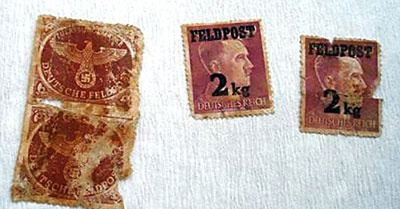
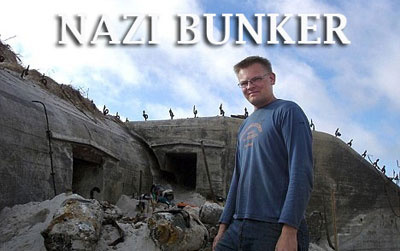
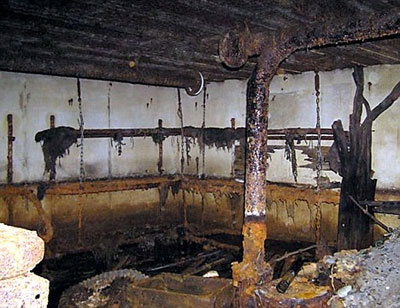
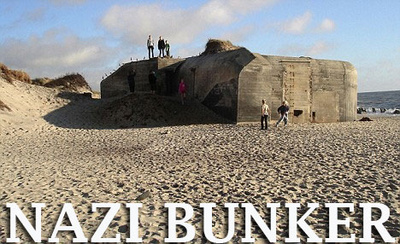
ATTENTION READERS
We See The World From All Sides and Want YOU To Be Fully InformedIn fact, intentional disinformation is a disgraceful scourge in media today. So to assuage any possible errant incorrect information posted herein, we strongly encourage you to seek corroboration from other non-VT sources before forming an educated opinion.
About VT - Policies & Disclosures - Comment Policy



